
What is the membrane switch?
What is the membrane switch?
What is the membrane switch? The membrane switch is a new type of electronic component that integrates key functions, indication marks and circuit connections. In the working process of the membrane switch, the metal dome plays a key role. When the key is pressed, the metal dome deforms, so that the upper circuit layer contacts the lower circuit layer, and the circuit is turned on. When the key is released, the metal dome returns to its original state, the upper circuit layer is separated from the lower circuit layer, and the circuit is disconnected.
What is the membrane switch?
The membrane switch is an input device widely used in various electronic devices. It can turn on or off the circuit when the user presses the corresponding key through the key area set on the surface, thereby triggering the specific function of the device connected to it.
This switch has many advantages. It is relatively light and thin, and can well adapt to the trend of continuous miniaturization of electronic equipment today, and will not add too much volume and weight to the device.
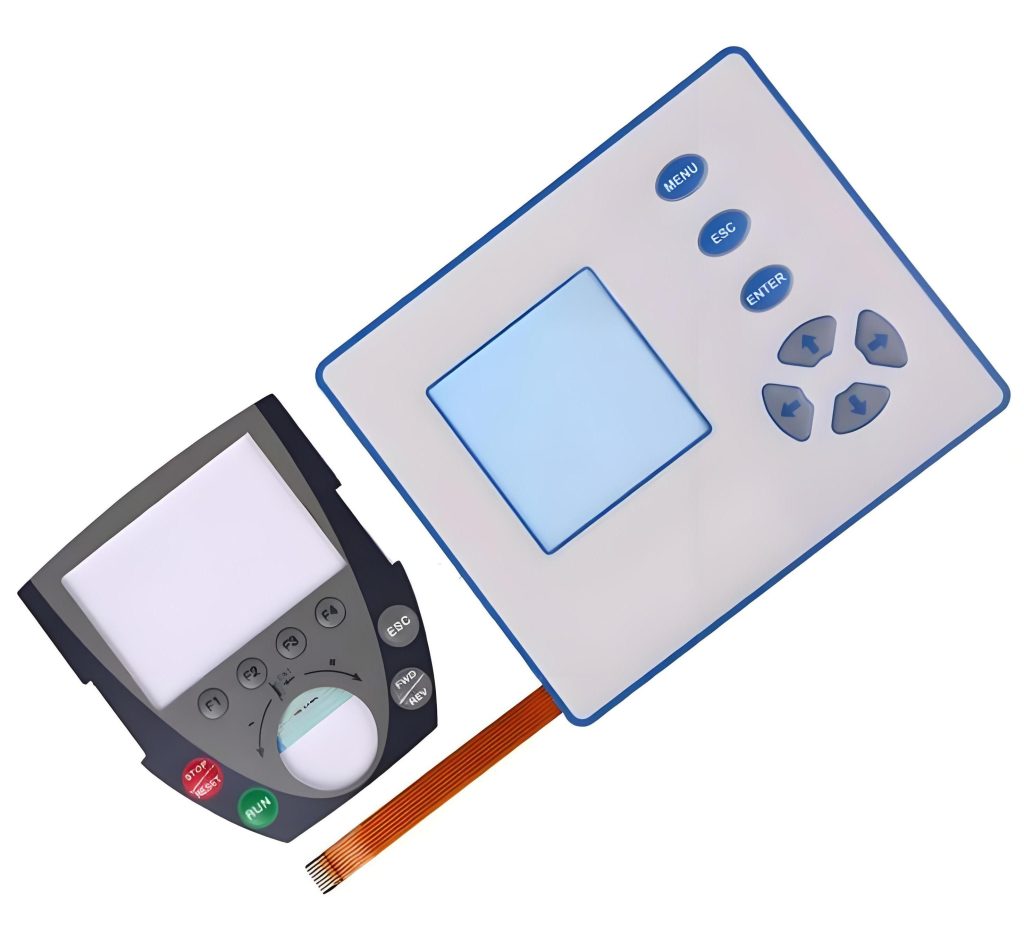
Moreover, it has a comfortable operation feel and appropriate pressing force. It also has good waterproof and dustproof performance. It can work stably in a variety of environments. Therefore, it is widely used in many fields such as consumer electronics, industrial control, and medical equipment.
What are the parts of a membrane switch?
A membrane switch is an electronic component that integrates multiple functions such as key functions, indication marks, and circuit connections. It is mainly composed of multiple layers of film materials, usually including a panel layer, an upper circuit layer, an isolation layer, a lower circuit layer, and a backing layer.
The panel layer generally uses materials such as polyester film, which has good wear resistance and insulation, and can be beautifully printed to display key marks, patterns, etc.
The upper circuit layer and the lower circuit layer are made of conductive materials, separated by an isolation layer. When the panel layer is pressed, the upper and lower circuit layers contact at a specific position of the isolation layer, thereby realizing the conduction of the circuit and completing the corresponding key function.
Are membrane switches good?
Membrane switches have shown their usefulness in many aspects, but there are also some limitations.
1. Usefulness:
- Light and portable: membrane switches are usually very light and thin, which makes them well adapted to the miniaturization design trend of various electronic devices.
- Strong appearance customization: The appearance can be customized according to the overall design style of different electronic devices. It can print various exquisite patterns, logos and different color combinations.
- Comfortable operation feel: Generally speaking, the pressing force of the membrane switch is moderate, and there will be a certain tactile feedback when pressing, so that the user can clearly perceive the completion of the operation.
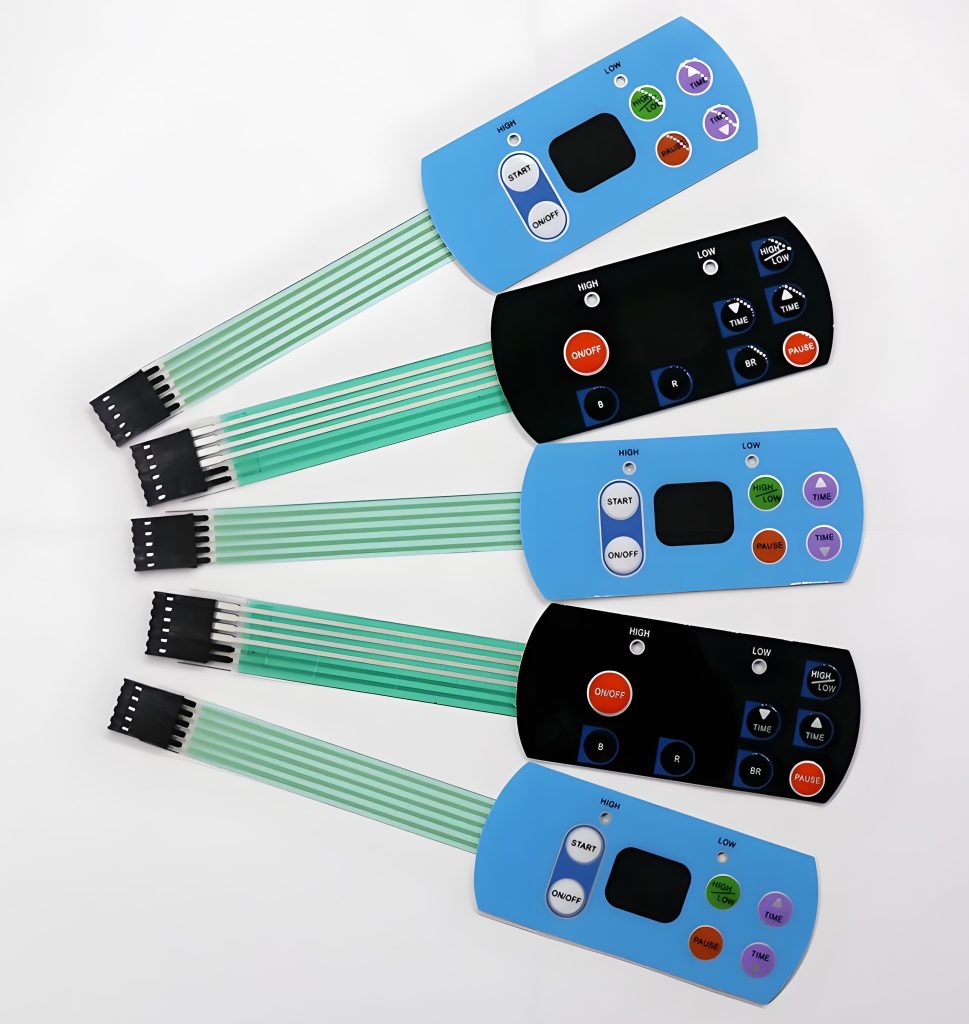
- Good waterproof and dustproof performance: Due to its own structure and material properties, the membrane switch has good waterproof and dustproof capabilities. In daily use, even if the device is in some relatively humid or dusty environments, the membrane switch can work normally.
- Wide application and strong compatibility: Membrane switches are widely used in many fields, such as mobile phones, tablets, digital cameras, etc. in the consumer electronics field, automation equipment, instruments and meters in the industrial control field, and various detectors and monitors in the medical equipment field.
2. Limitations:
- Relatively limited durability: After a large number of frequent pressing operations, the conductive layer, isolation layer and other components of the membrane switch may be worn and aged, which will affect its performance, resulting in poor circuit conduction or key failure.
- Tactile feedback is not strong enough: Although membrane switches can provide certain tactile feedback, it is still slightly weak compared to the obvious “click” sound and strong touch of mechanical switches.
In general, if you pay attention to the thin and light design of the device, appearance customization, and good waterproof and dustproof performance, then membrane switches are a good choice; but if you have high requirements for durability and strong tactile feedback, you may need to consider its applicability comprehensively.
What is a membrane switch used for?
Membrane switches play an important role in many fields and have the following multiple uses:
1. Electronic equipment control
In various consumer electronic devices, membrane switches are common control components. It can be used as a power switch to turn the device on and off. Through the operation of the membrane switch, users can conveniently control the basic functions of electronic devices and improve the user experience.
2. Industrial control applications
In the industrial field, membrane switches are also indispensable. For automated production equipment, instruments and meters, industrial control panels, etc., membrane switches can be used to start or stop the operation of the equipment. It can also be used for parameter setting and adjustment, changing the set values of the operating parameters of the equipment.
3. Medical equipment operation
In terms of medical equipment, membrane switches are also widely used. Membrane switches can be used as operating buttons. Medical staff or patients can start the test program, view the test results, adjust the settings of the equipment, etc. by pressing the corresponding membrane switch.
4. Household appliance control
Many household appliances also use membrane switches to achieve control functions. Membrane switches can be used as power switches, mode selection switches, function adjustment switches, etc. It allows users to easily operate household appliances.
5. Automotive electronics
In the field of automotive electronics, membrane switches also have their place. For example, some control buttons on the car’s center console, such as radio channel adjustment, volume control, air conditioning temperature adjustment, wind speed control, etc., often use membrane switches.
What is the advantage of membrane switch?
Membrane switches have many advantages. The following is a detailed introduction:
- 1. Lightweight and portable: membrane switches are usually composed of multiple layers of film, with a thin overall thickness and light weight, which makes them easily adaptable to various electronic devices with strict requirements on space and weight.
- 2. Beautiful appearance: various exquisite patterns, texts, logos and different color combinations can be presented on the panel through printing technology, which can perfectly integrate with the overall appearance design of the equipment and enhance the beauty and texture of the equipment.
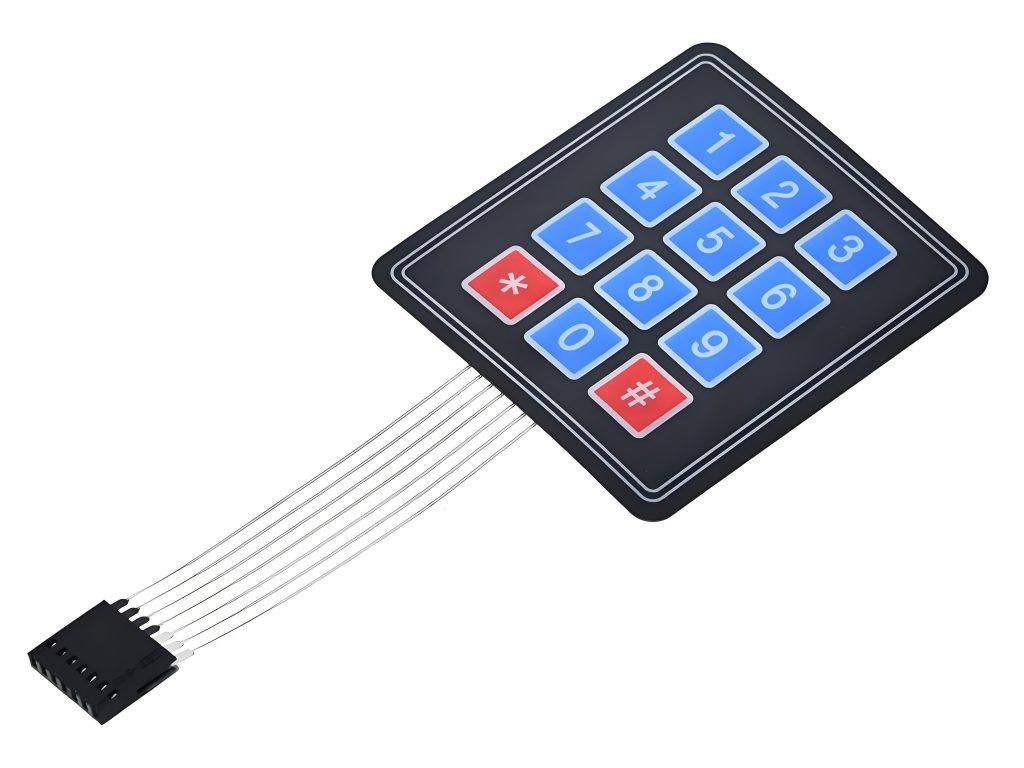
- 3. Good waterproof and dustproof performance: its overall sealed structure can effectively prevent moisture, dust, oil and harmful gases from entering the switch, avoiding erosion and damage to the contacts and circuits, thereby ensuring that the switch can still work normally under relatively harsh environmental conditions and extending the service life of the switch.
- 4. Comfortable operation feel: the pressing force of the membrane switch is moderate, and there will be a certain tactile feedback when pressing, so that the user can clearly perceive the completion of the operation action, and the touch can be further enhanced by installing metal shrapnel under the button.
- 5. Easy installation: the installation process of the membrane switch is relatively simple, without complicated welding or screw fixing operations, which greatly improves production efficiency and reduces installation costs.
- 6. Low cost: the materials used to make membrane switches are relatively common and low cost. At the same time, its production process is relatively mature, which can achieve large-scale automated production, thereby effectively reducing production costs.
- 7. High safety: The voltage and current of membrane switches are low during operation, and generally do not cause electric shock to the human body. At the same time, its good insulation performance can effectively prevent safety hazards such as leakage, which improves the safety of the equipment during use.
What is the difference between membrane and dome switch?
1. Working principle
When the membrane switch is pressed, the contact of the upper circuit deforms downward and contacts the plate of the lower circuit for conduction. After the finger is released, the contact rebounds, the circuit is disconnected, and the circuit triggers a signal.
Shrapnel switches, especially metal shrapnel switches, use metal shrapnel as the conducting medium. When pressure acts on the panel, the metal shrapnel deforms to conduct the circuit. After the pressure is released, the shrapnel returns to its original state and the circuit is disconnected.
2. Application scenarios
Membrane switches are widely used in industrial control, medical equipment, automotive industry, smart toys, household appliances and other fields. They are favored for their rigorous structure, beautiful appearance, good sealing, moisture resistance, and long service life.
Metal dome switches are commonly used in electronic products, such as car navigation systems, remote controls, MP3 players, etc., because of their small size, good conduction, good feel, long life, easy assembly, good dust resistance and other characteristics.
In short, as a new type of electronic component, the working principle of membrane switch is based on the contact conduction between the upper circuit layer and the lower circuit layer. Metal dome plays a key role in providing good contact performance, enhancing the feel of the buttons and improving the reliability of the switch.
How to clean silicone rubber? Silicone Rubber Membrane Switch
How to clean silicone rubber? To clean the silicone rubber membrane switch, use a mild detergent and a soft cloth. First, turn off the power and remove the keycaps. Use a slightly damp soft cloth to gently wipe the switch and surrounding areas to remove dust and stains. If the stains are stubborn, wipe with ...
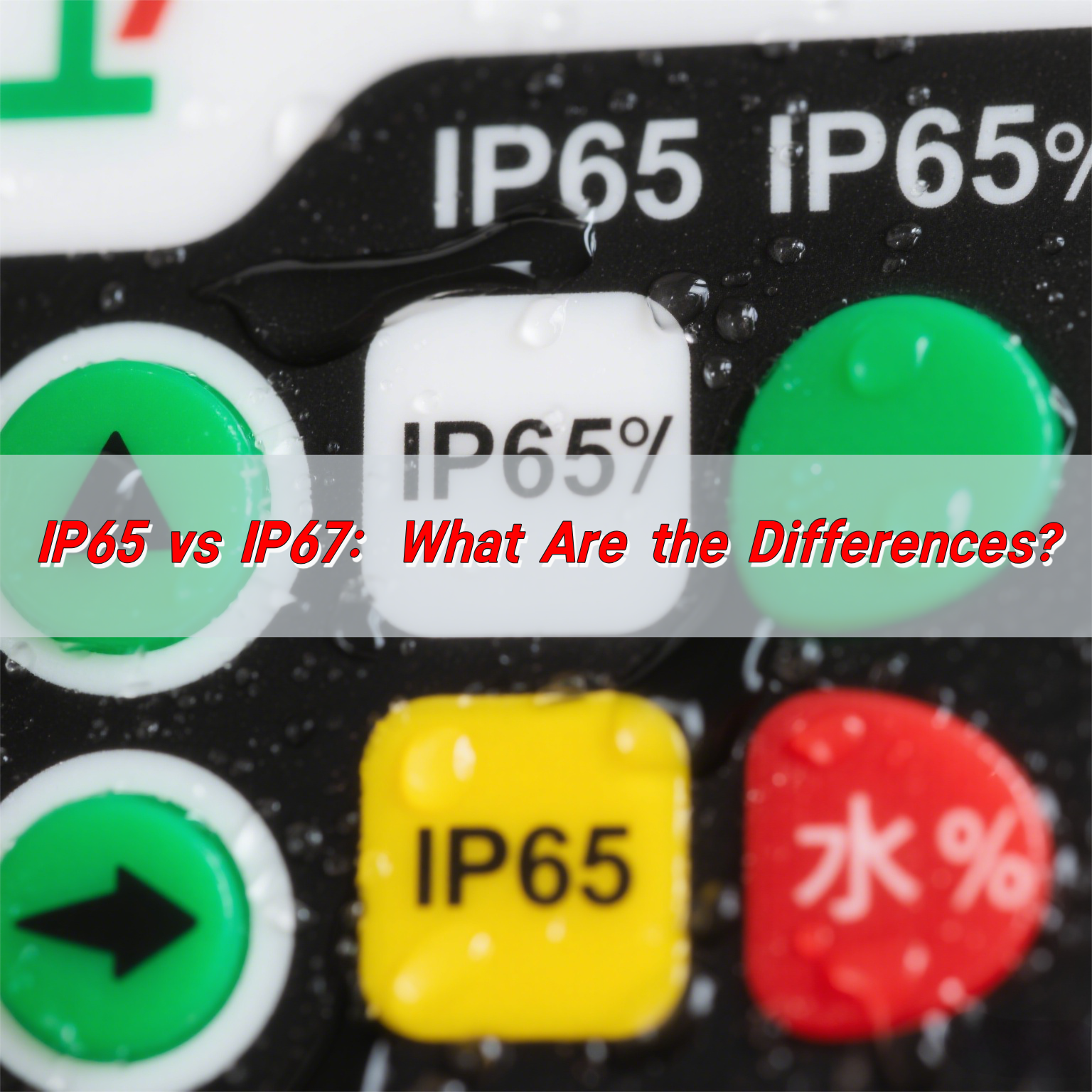
IP65 vs IP67: What Are the Differences?
IP65 vs IP67? The IP65 protection level provides complete dust protection for the device and can withstand low-pressure water jets from all directions, making it suitable for ordinary outdoor environments. Based on this, IP67 allows the device to be immersed in 1 meter of water for a short period of time (usually 30 minutes) without ...
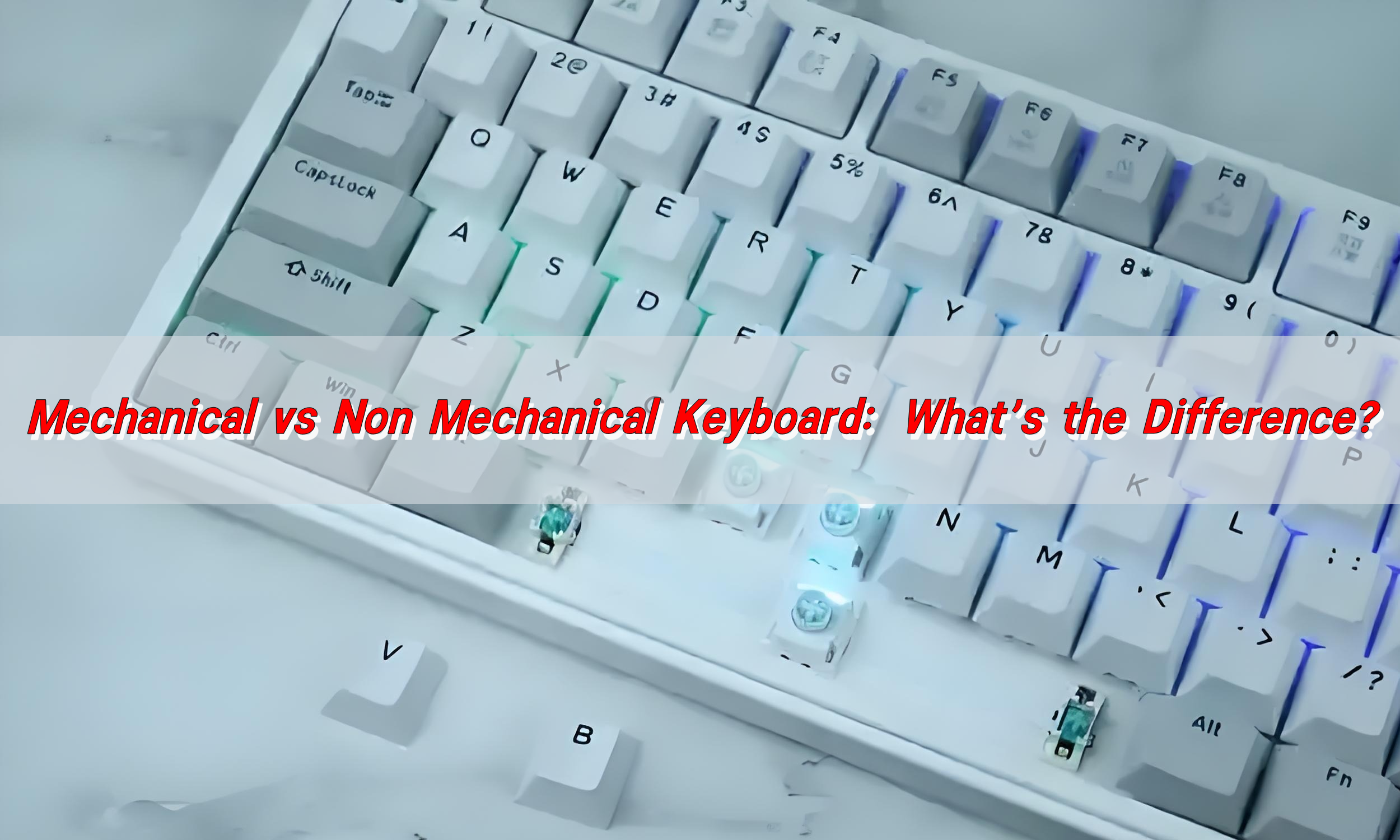
Mechanical vs Non Mechanical Keyboard: What’s the Difference?
The main differences between mechanical keyboards and non-mechanical keyboards (such as membrane keyboards) are structure, feel, durability and sound. Each key of a mechanical keyboard has an independent switch, providing a clear feel and tactile feedback, strong durability, louder sound, and is suitable for gamers. Non-mechanical keyboard keys contact the circuit board through a rubber ...
Contact us online